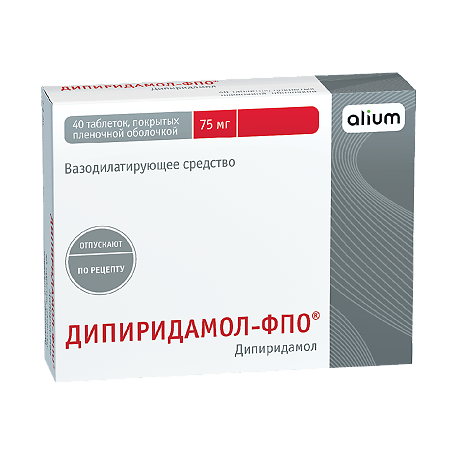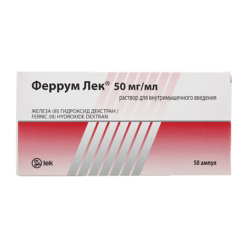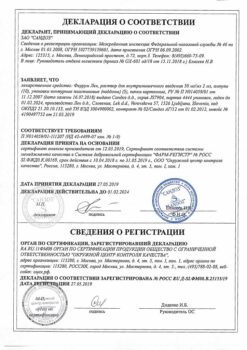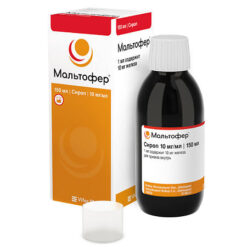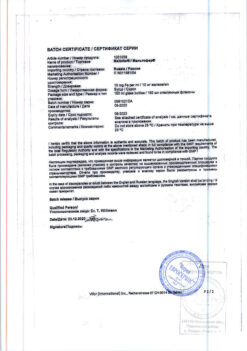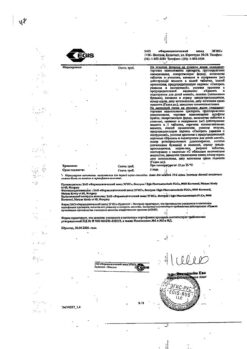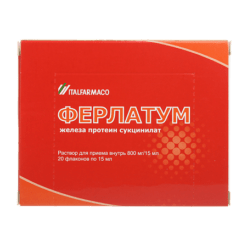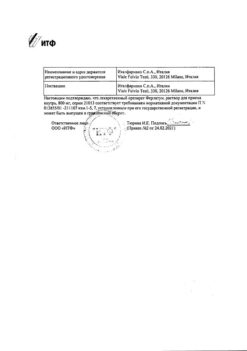No products in the cart.
Dipyridamol-FPO, 75 mg 40 pcs
€16.99 €14.16
Description
Pharmacotherapeutic group: Vasodilator
ATX code: B01AC07
Pharmacodynamics
Dipyridamole inhibits platelet aggregation and adhesion, improves microcirculation and has a mild vasodilator effect. The mechanism by which dipyridamole has an inhibitory effect on platelet aggregation is related to the inhibition of adenosine reuptake (platelet reactivity inhibitor) by endothelial cells, red blood cells and platelets; activation of adenylate cyclase and inhibition of platelet phosphodiesterases. Thus, dipyridamole prevents the release of aggregation activators from platelets – thromboxane (TxA2), ADP, serotonin and others. Dipyridamole increases synthesis of prostacyclin PgI2 by vascular endothelium, normalizes ratio of PgI2 and TxA2, preventing platelet aggregation and increases synthesis of endothelial nitric oxide (NO).
Dipyridamole reduces platelet adhesiveness, prevents clot formation in vessels and stabilizes blood flow in the focus of ischemia.
Dipyridamole dose-dependently prolongs abnormally shortened platelet lifespan.
Dipyridamole due to its vasodilatory properties helps to decrease total peripheral resistance of blood vessels, improves microcirculation and has angioprotective effect. These effects are due to increased activity of endogenous adenosine (adenosine affects vascular smooth muscle and prevents release of norepinephrine). Dipyridamole has both angiogenic and arteriogenic activity, stimulating the formation of new capillaries and collateral arteries.
Dipyridamole normalizes venous outflow, reduces the incidence of deep vein thrombosis in the postoperative period. It improves microcirculation in the retina and renal glomeruli.
In neurological practice such pharmacodynamic effects of dipyridamole as reduction of cerebral vascular tone and improvement of cerebral circulation are used. According to angiographic studies, the use of dipyridamole in combination with acetylsalicylic acid can slow the progression of atherosclerosis.
In obstetrical practice dipyridamole is used to improve placental blood flow and to prevent dystrophic changes in the placenta, to eliminate hypoxia of fetal tissues and accumulation of glycogen in them.
Pharmacokinetics
Absorption
. When taken orally, dipyridamole is rapidly absorbed from the gastrointestinal tract: Most in the stomach and partly in the small intestine. Bioavailability is 37-66%, the time of reaching maximum concentration in blood plasma is about 2 hours.
Distribution
Dipyridamole is almost completely bound to plasma proteins. After oral administration there is a biphasic pattern of decrease in plasma concentrations of dipyridamole.
Metabolism
Dipyridamole is metabolized in the liver by binding to glucuronic acid.
Elimation
The elimination half-life is 20-30 minutes in the initial phase and 10-12 hours in the final phase of elimination. It is excreted mainly in the bile and is excreted through the intestine as monoglucuronide. A small amount of dipyridamole (1-3 %) is excreted by the kidneys.
Indications
Indications
– treatment and prevention of ischemic cerebral circulatory disorders;
– dyscirculatory encephalopathy;
– primary and secondary prevention of coronary heart disease (CHD), especially with intolerance to acetylsalicylic acid (for a dosage of 75 mg);
– prevention of arterial and venous thrombosis and their complications;
– prevention of thromboembolism after heart valve replacement surgery;
– prevention of placental insufficiency during complicated pregnancy;
– as part of complex therapy for any microcirculation disorders of any origin;
– as an interferon inducer and immunomodulator for the prevention and treatment of influenza, acute respiratory viral infections (ARVI) (for a dosage of 25 mg).
Pharmacological effect
Pharmacological effect
Pharmacotherapeutic group: Vasodilating agent
ATX code: B01AC07
Pharmacodynamics
Dipyridamole inhibits platelet aggregation and adhesion, improves microcirculation, and has a mild vasodilator effect. The mechanism by which dipyridamole has an inhibitory effect on platelet aggregation is associated with the suppression of the reuptake of adenosine (an inhibitor of platelet reactivity) by endothelial cells, erythrocytes and platelets; activation of adenylate cyclase and inhibition of platelet phosphodiesterases. Thus, dipyridamole prevents the release of aggregation activators from platelets – thromboxane (TxA2), ADP, serotonin and others. Dipyridamole increases the synthesis of prostacyclin PgI2 by the endothelium of the vascular wall, normalizes the ratio of PgI2 and TxA2, preventing platelet aggregation; enhances the synthesis of endothelial nitric oxide (NO).
Dipyridamole reduces platelet adhesiveness, prevents the formation of blood clots in blood vessels and stabilizes blood flow in the ischemic area.
Dipyridamole dose-dependently prolongs the pathologically shortened platelet life time.
Dipyridamole, due to its vasodilating properties, helps reduce total peripheral vascular resistance, improves microcirculation, and has an angioprotective effect. These effects are due to increased activity of endogenous adenosine (adenosine affects vascular smooth muscle and prevents the release of norepinephrine). Dipyridamole has both angiogenic and arteriogenic activity, stimulating the formation of new capillaries and collateral arteries.
Dipyridamole normalizes venous outflow and reduces the incidence of deep vein thrombosis in the postoperative period. Improves microcirculation in the retina and renal glomeruli.
In neurological practice, the pharmacodynamic effects of dipyridamole are used, such as reducing cerebral vascular tone and improving cerebral circulation. According to angiographic studies, the use of dipyridamole in combination with acetylsalicylic acid can slow down the progression of atherosclerosis.
In obstetric practice, dipyridamole is used to improve placental blood flow and prevent dystrophic changes in the placenta, eliminate hypoxia of fetal tissue and the accumulation of glycogen in them.
Pharmacokinetics
Absorption
When taken orally, dipyridamole is rapidly absorbed from the gastrointestinal tract: most of it in the stomach and partly in the small intestine. Bioavailability is 37-66%, time to reach maximum concentration in blood plasma is about 2 hours.
Distribution
Dipyridamole is almost completely bound to plasma proteins. After oral administration, a biphasic decrease in the concentration of dipyridamole in the blood plasma is observed.
Metabolism
Dipyridamole is metabolized in the liver by binding to glucuronic acid.
Removal
The half-life in the initial phase is 20-30 minutes, and in the final phase of elimination – 10-12 hours. It is excreted primarily into bile and excreted through the intestines as a monoglucuronide. A small amount of dipyridamole (1-3%) is excreted by the kidneys.
Special instructions
Special instructions
Dipyridamole-FPO® is not recommended for use by children under 12 years of age.
During treatment, you should avoid drinking coffee and tea.
In patients with myasthenia gravis, after changing the dose of dipyridamole, it may be necessary to adjust the doses of drugs used in the complex therapy of myasthenia gravis.
Patients regularly taking dipyridamole orally should not be given it additionally intravenously. If an intravenous dipyridamole loading test is necessary to diagnose coronary artery disease, oral administration of the drug must be discontinued 24 hours before the procedure.
In coronary steal syndrome, the use of aminophylline is indicated to improve intracardiac blood flow.
Impact on the ability to drive vehicles and machinery
Due to the possibility of a decrease in blood pressure and the occurrence of dizziness during the period of taking the drug, the ability to concentrate and the speed of psychomotor reactions in patients may decrease. Therefore, during treatment with dipyridamole, caution should be exercised when driving vehicles and engaging in potentially hazardous activities that require increased concentration and speed of psychomotor reactions.
Active ingredient
Active ingredient
Dipyridamole
Composition
Composition
1 tablet contains:
active ingredient: dipyridamole – 25 mg / 50 mg / 75 mg;
excipients: lactose monohydrate, copovidone, microcrystalline cellulose, magnesium stearate, croscarmellose sodium;
Excipients for the coating: hypromellose (hydroxypropyl methylcellulose), talc, titanium dioxide, macrogol 6000 (polyethylene glycol 6000), quinoline yellow dye.
Pregnancy
Pregnancy
The use of the drug during pregnancy and breastfeeding is possible only if the expected benefit to the mother outweighs the possible risk to the fetus and child. The duration of treatment is determined by the doctor.
Contraindications
Contraindications
– hypersensitivity to the components of the drug;
– lactose intolerance, lactase deficiency, glucose-galactose malabsorption syndrome;
– acute myocardial infarction;
– unstable angina;
– widespread stenotic atherosclerosis of the coronary arteries;
– subaortic stenosis;
– decompensated heart failure;
– severe arterial hypotension;
– severe arterial hypertension;
– severe heart rhythm disturbances;
– chronic obstructive pulmonary disease;
– decompensated renal failure;
– liver failure;
– hemorrhagic diathesis;
– diseases with a tendency to bleeding (peptic ulcer of the stomach and duodenum, etc.);
– children under 12 years of age (efficacy and safety have not been studied).
With caution
Elderly patients (may cause orthostatic hypotension).
Side Effects
Side Effects
Classification of the frequency of side effects according to the recommendations of the World Health Organization (WHO): very often (≥ 1/10); often (from ≥ 1/100 to < 1/10); uncommon (from ≥ 1/1000 to < 1/100); rare (from ≥ 1/10000 to < 1/1000); very rare (< 1/10000, including isolated reports; frequency unknown - it is not possible to determine the frequency of occurrence based on available data.
Cardiac disorders:
uncommon – tachycardia, flushing of the face, coronary steal syndrome (when used at a dose of more than 225 mg/day).
Vascular disorders:
uncommon – decreased blood pressure (especially when used together with other vasodilators).
From the gastrointestinal tract:
uncommon – nausea, vomiting, diarrhea, epigastric pain.
Typically, these side effects, appearing at the beginning of the course of treatment, disappear with longer use of the drug.
From the blood and homeostasis system:
uncommon – thrombocytopenia, changes in the functional properties of platelets, bleeding;
very rarely – increased bleeding after surgery.
From the immune system:
rarely – allergic reactions such as skin rash, urticaria.
Others:
frequency unknown – weakness, dizziness, headache, facial skin flushing, arthritis, myalgia, rhinitis, increased symptoms of coronary artery disease, such as angina pectoris, myocardial infarction.
Interaction
Interaction
Xanthine derivatives (coffee, tea, theophylline derivatives) can weaken the vasodilatory effect of dipyridamole.
Dipyridamole, when used simultaneously, may enhance the effect of anticoagulants and acetylsalicylic acid.
Dipyridamole enhances the effect of antihypertensive drugs.
Dipyridamole weakens the properties of cholinesterase inhibitors, which can lead to aggravation of myasthenia gravis.
Cephalosporins enhance the antithrombic effect of dipyridamole.
Antacids reduce the maximum concentration of dipyridamole due to decreased absorption.
Overdose
Overdose
Symptoms
Marked decrease in blood pressure, development or exacerbation of angina attacks, tachycardia, feeling of heat, “flushing” of blood to the face, increased sweating, anxiety, weakness and dizziness.
Measures to assist in case of overdose
Induction of vomiting, gastric lavage, use of adsorbents to reduce absorption (activated carbon, etc.). The undesirable vasodilating effect of the drug can be stopped by slow (50-100 mg/min) intravenous administration of aminophylline. In case of symptoms of angina pectoris, the use of sublingual nitroglycerin is indicated.
Storage conditions
Storage conditions
The drug should be stored out of the reach of children at a temperature not exceeding 25°C.
Shelf life
Shelf life
3 years. Do not use after the expiration date stated on the package.
Manufacturer
Manufacturer
Alium JSC, Russia
Additional information
| Shelf life | 3 years. Do not use after the expiration date stated on the package. |
|---|---|
| Conditions of storage | The drug should be kept out of reach of children at a temperature not exceeding 25°C. |
| Manufacturer | Alium JSC, Russia |
| Medication form | pills |
| Brand | Alium JSC |
Related products
Buy Dipyridamol-FPO, 75 mg 40 pcs with delivery to USA, UK, Europe and over 120 other countries.

